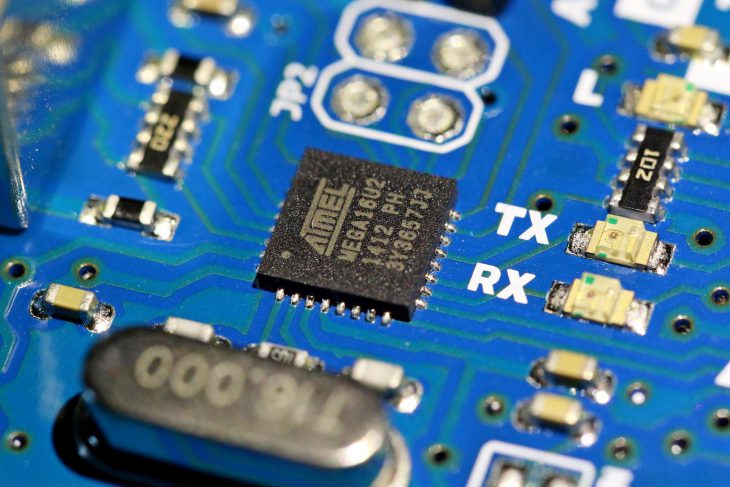How can we improve solar cells to produce more energy from light? Can we make LEDs brighter and more efficient? How can we improve the sensitivity of photodiodes, such as smoke detectors? A recent study out of the United Kingdom has discovered a method to improve semiconductor materials that will make them cheaper and more easily integrated into optoelectronic devices such as these.
A material that electricity easily flows through is called a conductor, such as a metal. Materials called semiconductors require energy to get electricity to flow. The amount of energy required to start this type of conduction is called the bandgap. Devices such as LEDs, solar cells, and laser diodes are all built with semiconductors.
Silicon is one of the most commonly used materials in the semiconductor industry. However, the bandgap in silicon is quite high. One way to alter a material’s properties is by stretching or compressing the material. This is called strain engineering, where strain refers to how much a material is stretched as a percentage of its original size.
It has previously been determined that a very large strain, nearly 10%, would be needed to lower the bandgap of silicon to a level that would be useful in optoelectronic devices. Many methods of straining silicon have been attempted previously, but strains were generally much lower than ideal, typically less than 2%. This study has implemented a unique method of ion implantation to strain silicon, reaching strains much higher than ever achieved previously.
The scientists prepared samples from a layered material that consisted of a thin silicon top layer, an insulator middle layer, and a thick Si bottom layer. They etched the bottom and middle layers using a harsh solution of potassium hydroxide so that all that remained was the thin (35 nm) silicon top layer. They then used a focused beam of charged particles, or ions, to stretch the silicon films.
The ion beam is created in a special kind of microscope called a FIB. It charges the atoms in a gas made of xenon to create a beam of xenon ions that can then be focused on the sample in a controlled way. The beam removes small pieces of the sample, a process called sputtering. The scientists used the FIB microscope software to create different ion exposure patterns, such as a circle, rectangle, or a ring shape for shining the ions on the silicon samples.
Before exposing the samples to the ion beam, they examined the silicon films using an electron microscope. They found the silicon appeared to have wrinkles, like a rippled texture, over the surface. The scientists then hit the surface of the wrinkled silicon with the ion beam in a circular pattern. They found that by changing how long the circle was exposed to the ions, they could change the wrinkled pattern of the silicon surrounding the circle.
When the scientists exposed the samples to ions in a ring shaped pattern, the silicon was stretched at the circle’s edge in all directions and wrinkles in the unexposed center of the ring flattened out. This is called biaxial strain, which the authors described is like tightening a drum head.
Next, the scientists used a long narrow rectangle shape for ion exposure. The silicon inside the slot was stretched tight along the long side of the rectangle. This is known as a uniaxial strain.
In order to measure how much strain each silicon sample was under, the scientists used a measurement technique called Raman Spectroscopy. In this technique, a laser beam illuminates the sample causing the molecules in the sample to vibrate. The energy of the reflected laser is measured and provides information on the amount of energy absorbed that caused the molecules to vibrate.
This vibrational energy is unique for every material and depends on the strength of the bonds between atoms. Therefore if a material has been stretched, the distance between atoms will also lengthen, which will change this unique vibrational energy. The change in energy can then be used to compute the strain in the sample.
The scientists computed the strain in the silicon sample under biaxial strain (the ring shaped pattern) and determined the strain was as high as 3.1%. Then they computed the strain in the sample under uniaxial strain (narrow rectangle pattern) and determined the strain was as high as 8.5%. These strains are much higher than ever previously measured in silicon.
The method for strain engineering silicon developed in this study is simple and could easily be applied to materials in the semiconductor industry. Despite its simplicity, the method induces very high strains in the material without breaking it. This would lower the bandgap, making semiconductors work more efficiently.


